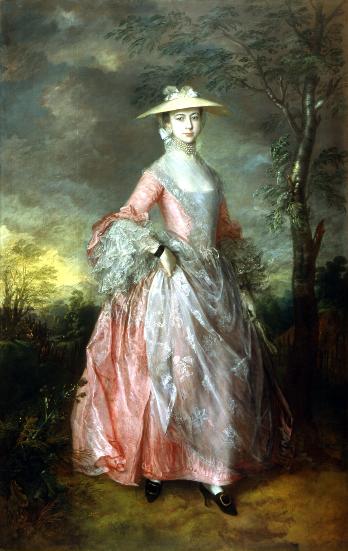Between 1887 and 1891 the wealthy brewer Edward Cecil Guinness, 1st Earl of Iveagh, amassed a remarkable collection of Old Master paintings, which he subsequently donated to the British nation together with Kenwood House and its estate. Seventy-five years ago the Iveagh Estate was opened to the public; so to celebrate that anniversary I have chosen one of my favourite works from the Iveagh Bequest: Thomas Gainsborough’s portrait of Mary, Countess Howe, which can still be seen at Kenwood House today. Julius Bryant's outstanding, recently published catalogue to the collections at Kenwood tells the story of the picture in great detail, and for what follows I have drawn heavily on his meticulous research - as well as his mischievous sensitvity to pictorial metaphor.
At just under eight feet high, Gainsborough’s masterpiece is one of the most imposing of English eighteenth-century portraits. Wearing a formidably fashionable and impressively intricate outfit, Countess Howe puts her best – and immaculately shod – foot forward in a romantically stormy landscape which stands, symbolically, for her extensive landed interests. Sensuous but self-possessed, she fixes the viewer with an expression of coquettishly alluring hauteur. The embodiment of a very particular British type of beauty, teasingly self-contained, she bears an uncanny resemblance to Helen Mirren.
Born plain Mary Hartopp, daughter of Chiverton Hartopp of Welby in Nottinghamshire, a landowner who became Governor of Plymouth, she had married into the aristocracy in 1758 by wedding Richard Howe. A good match had become a spectacular one when her new husband’s older brother died in 1758 at the Battle of Tricondera in North America, leaving him to inherit the Howe viscountcy. Like his deceased brother, Richard Howe pursued a military career, distinguishing himself in the navy during the Seven Years War to such an extent that by its end,...


